- Home ·
- Publications ·
- Research Area A ·
- 2007 ·
Research Area A - Publications 2007
29-Apr-2008
Physik in unserer Zeit, online article
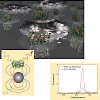
Forscher der LMU München haben gezeigt, dass sich mit Hilfe von Silbernanoteilchen die Effizienz von Lichtsammelkomplexen enorm steigern lässt. Da es sich hierbei um die zentralen Funktionsträger für das Einsammeln von Licht bei der Photosynthese handelt, könnte diese Entdeckung bedeutsam für die Entwicklung neuartiger Hybrid-Solarzellen sein.
22-Dec-2007
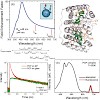
Ensemble and single-molecule spectroscopy demonstrates that both emission and absorption of peridinin-chlorophyll-protein photosynthetic antennae can be largely enhanced through plasmonic interactions. We find up to 18-fold increase of the chlorophyll fluorescence for complexes placed near a silver metal layer. This enhancement, which leaves no measurable effects ...
18-Dec-2007
PNAS, online article
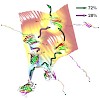
Nanomanipulation of biomolecules by using single-molecule methods and computer simulations has made it possible to visualize the energy landscape of biomolecules and the structures that are sampled during the folding process. We use simulations and single-molecule force spectroscopy to map the complex energy landscape of GFP that is used as a marker in cell ...
29-Nov-2007

Periodic mesoporous materials formed through the cooperative self-assembly of surfactants and framework building blocks can assume a variety of structures1–3, and their widely tuneable properties make them attractive hosts for numerous applications4–7. Because the molecular movement in the pore system is the most important and defining characteristic of porous ...
25-Oct-2007
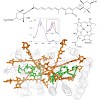
Peridinin–chlorophyll–protein (PCP), containing differently absorbing chlorophyll derivatives, are good models with which to study energy transfer among monomeric chlorophylls (Chls) by both bulk and singlemolecule spectroscopy. They can be obtained by reconstituting the N-terminal domain of the protein (N-PCP) with peridinin and chlorophyll mixtures. Upon ...
02-Oct-2007
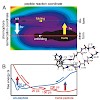
A light-switchable peptide is transformed with ultrashort pulses from aß-hairpin to an unfolded hydrophobic cluster and vice versa. The structural changes are monitored by mid-IR probing. Instantaneous normal mode analysis with a Hamiltonian combining density functional theory with molecular mechanics is used to interpret the absorption transients. Illumination ...
17-Aug-2007
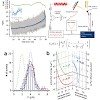
Direct observation of the folding of a single polypeptide chain can provide important information about the thermodynamic states populated along its folding pathway. In this study we present a lock-in force spectroscopy technique that improves resolution of AFM force spectroscopy to 400 fN. Using this technique we show that immunoglobulin domain 4 from ...
10-Aug-2007
Florian O. Koller, Rossana Reho, Tobias E. Schrader, Luis Moroder, Josef Wachtveitl, Wolfgang Zinth
J. Phys. Chem. B, 2007, 111, 10481-86 published on 10.08.2007
The Journal of Physical Chemistry B, online article

Infrared absorption experiments on light-triggered azobenzene peptides have been performed below and above the freezing point of the solvent dimethyl sulfoxide (DMSO). Even 20 K below the freezing point, illumination of the azobenzene chromophore resulted in IR absorption changes indicative of light-induced structural rearrangements of the peptide. In addition, ...
05-Jul-2007
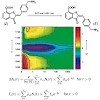
The molecule HTI, which combines hemithioindigo and hemistilbene molecular parts, allows reversible switching between two isomeric states. Photochromic behaviour of the HTI molecule is observed by irradiation with UV/Vis light. The photochemical reaction, a Z/E isomerization around the central double bond connecting the two molecular parts, is investigated by ...
14-Jun-2007
Journal of the American Chemical Society, online article
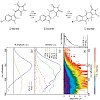
The photochromicity of fulgimides rests on the existence of open (E) and closed ring (C) isomers. As predicted by the Woodward-Hoffmann rules both isomers can photochemically be interconverted. This interconversion has been studied by femtosecond fluorescence and transient absorption spectroscopy. For either direction (E toC cyclization and C to E cycloreversion) ...
01-Jun-2007
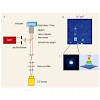
Auf welchem Weg dringt ein Virus bei einer Infektion in eine Zelle ein? Wie bewegen sich Motorproteine in Zellen oder einzelne Moleküle in nanoporösen Materialien? Das Verfolgen (Tracking) einzelner Teilchen unter dem Fluoreszenzmikroskop erlaubt es, diese und ähnliche Fragen aus der Biophysik, der Medizin und den Materialwissenschaften zu beantworten.
12-Apr-2007
Applied Physics B Lasers and Optics, online article
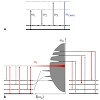
A novel type of non-linear Raman microscopy, femtosecond stimulated Raman microscopy (FSRM), is introduced. It employs femtosecond white light pulses and intense picosecond pulses which are derived from a femtosecond laser/amplifier system. The pulses are coupled into a microscope set-up and induce a stimulated Raman process at the focus. The Raman interaction ...
20-Feb-2007
Thorsten Hugel, Jens Michaelis, Craig L. Hetherington,* Paul J. Jardine, Shelley Grimes, Jessica M. Walter, Wayne Falk, Dwight L. Anderson, Carlos Bustamante
PLOS Biology, 2007, 5, 558-67 (pdf) published on 20.02.2007
www.plosbiology.org, online article
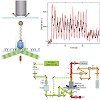
The bacteriophage Phi29 uses a molecular motor to drive its genome into a preformed protein capsid. The central part of this molecular motor is formed by a ring of twelve proteins called the connector. Symmetry and structural arguments have let to the so called rotation hypothesis, i.e. a rotation of the connector is used to drive the DNA into the capsid, which ...










